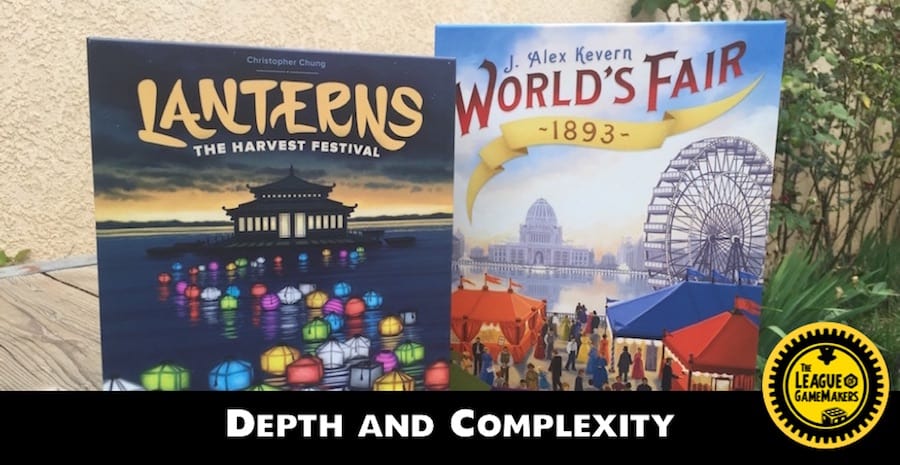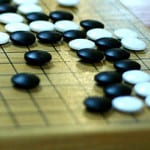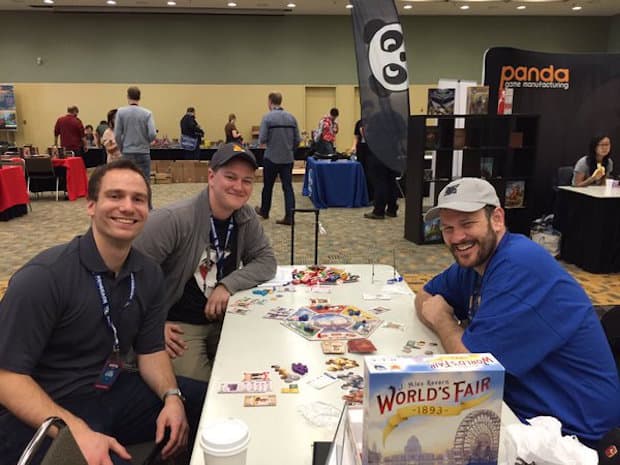
Introduction by Michael Domeney
You’ve planned, you’ve experimented, you’ve crafted a workable prototype, you’ve playtested for days, weeks, even months. The gameplay is enjoyable, the mechanics are pretty straightforward; you might even feel comfortable pitching it to a publisher. But there’s a lingering impression that you can’t quite shake:
“Something’s missing…”
It’s not quite compelling or engaging enough. Some might consider it too light, or a bit shallow. Now what? Can we “give” a game depth?

Enter Randy Hoyt, the founder of Foxtrot Games. Foxtrot Games is best known for bringing us Lanterns: The Harvest Festival, and World’s Fair 1893. As a publisher and developer, Randy is no stranger to grappling with this “depth dilemma” in games. Many otherwise “nice” game submissions have been given his friendly wave on account of their lack of depth. In order to study this issue more in-depth, I sat down (figuratively, through the wonders of the internet) with Randy and discussed his thoughts on depth vs. complexity in game design.
MIKE:
So, Randy, when you talk about “depth” in games, what exactly do you mean?
RANDY:
There are a lot of different angles we can use to look at individual games, as well as to compare them to others. “Depth” and “complexity” are just two of many angles. I probably use too many of these terms imprecisely or even interchangeably, so I hope this will be a good opportunity to dive into these terms and clarify them for myself.
WHEN I TALK ABOUT “DEPTH”…
I think of how many meaningfully different outcomes there are for the game. Tic-tac-toe is probably the best example of a shallow game. Players take turns and make choices, but if both players have even the tiniest amount of skill then the game will end in a tie. Chess and Go are probably the best examples of deep games: games between skilled players can follow many very different paths.
WHEN I TALK ABOUT COMPLEXITY…
I am referring to the rules, types of actions, modifiers, and maintenance. Go has such a simple set of rules: you only have one kind of piece, on your turn you place one piece on the 19 x 19 grid with very little restriction, and depending on where you place it there may be a little bit of maintenance.
On the other end of the spectrum, I think of a game like Sentinels of the Multiverse. It has so many different kinds of cards that interact in so many different ways. Minus 2 for this type of damage, Plus 1 for that action, X is doubled for this round, etc. It’s really common in that game to say, “Oh, I forget to count Y.”
PERHAPS IT’S BEST TO THINK OF COMPLEXITY AS APPLYING AT A TURN-BY-TURN LEVEL.
In a complex game, you have a lot of things you have to keep in mind or track just to know what your options are on a single turn.
AND PERHAPS IT’S BEST TO THINK OF DEPTH AS APPLYING AT AN OVERALL GAME LEVEL.
In a deep game, you have a lot of difficult decisions because every turn you have choices that affect the meaning and value of every other turn. If a game is complex and shallow, it can take a long time to figure out what all your options are; but, once you do, it’s easy to choose between them.
 Left to right, J. Alex Keven, Charles Wright, and Randy Hoyt
Left to right, J. Alex Keven, Charles Wright, and Randy Hoyt
MIKE:
Is complexity always bad? Is depth always good? Is it acceptable for a game to be more complex if it also has depth?
RANDY:
People play games for a lot of different reasons, so there’s no universal answer about the best amount of complexity and depth. Throughout the development process on a game, you must always keep in mind the target experience. Who will play the game? When and where will they play it? What will they hope to get out of it? Through playtesting and observing people play the game, you have to find the levels of complexity and depth that best fit that experience.
At the most general level, I would say a game can be complex if the depth justifies it. One of the most common issues I see in prototypes I play is that they are both too complex and too shallow to deliver the experience they aim to produce. But it’s really all about the experience: there are plenty of complex but shallow games that do in fact deliver.
MIKE:
So let’s say that my game is already designed, and I’ve gotten feedback from playtesters. How would you recommend addressing concerns like “It’s too complex”, or “It’s not deep enough”?
RANDY:
In my experience, you won’t usually get that kind of feedback from playtesters. It’s something you’ll have to infer from watching them. Are there rules that people continually forget or keep stumbling over? I like to stop players a few times in a game and ask them to talk me through what they’re considering as they take their turn, listening to see from their tone if they find it too shallow or too complex for their tastes. Testers often recommend changes after a playtest, and listening carefully to their suggested changes you can try to infer issues. You shouldn’t just simply make the changes they suggest, of course, but their suggestions can often help you identify when people find the game “too complex” or “too shallow”.
IF YOU THINK YOUR GAME IS TOO COMPLEX…
 I would recommend you look long and hard at all the elements of the game.
I would recommend you look long and hard at all the elements of the game.
- Can you replace your eight resources (wood, stone, clay, etc.) with a single resource (money)?
- Is the “scholar track” worth the three pages of rules it requires?
- What works differently in your game than everything else (“magic”, “coal”, “shame”, “rings”, or whatever it is), and what would happen if you removed it from the game entirely?
You want to be careful not to streamline the fun out of it, of course, but in my limited experience designers make changes that are too small more often than too big. As the game gets closer and closer to being finished, the changes will hopefully become smaller and feel like “refining” instead of “redesigning”.
IF YOU THINK YOUR GAME IS TOO SHALLOW…
you have to tread carefully. You should not just start adding complexity to it. I’ve followed the development process on many prototypes that add a lot of complexity without adding any depth. I would start by looking for a way to make your current decisions impact future turns a little more.
- If you have buildings that are only worth end-game points right now, perhaps they could also offer an ongoing ability?
- If you only have one currency, maybe a second currency would make the decisions tougher?
- If some cards are buildings and other cards are actions, you could try making every card a building and an action that players have to choose between. Maybe the longer you wait to do something, the more valuable it becomes?
MIKE:
Finally, could you give us some examples of each of these in the games you’ve developed?
RANDY:
In World’s Fair 1893, for example, we originally had all five regions score a different amount of points. Players never complained about it, but no one ever listed the trade-offs between the point values as one of their favorite parts. We made each region score the same; that allowed us to change some components, speed up the scoring phase, make the game a little bit more engaging, and let people focus more of their attention on the fun part.
In Lanterns: The Harvest Festival, for example, players originally earned victory points when they matched on a platform. Late in development, we changed those to a kind of currency that let you exchange one card for another. These tokens aren’t worth any points, but they give you flexibility that may result in some extra points. It’s still a simple and light game, but these tokens added a little extra depth around where you place tiles and which dedications you target.
MIKE:
Depth in game design is a deep concept for sure. Thank you, Randy, for taking time to explore it with us!









